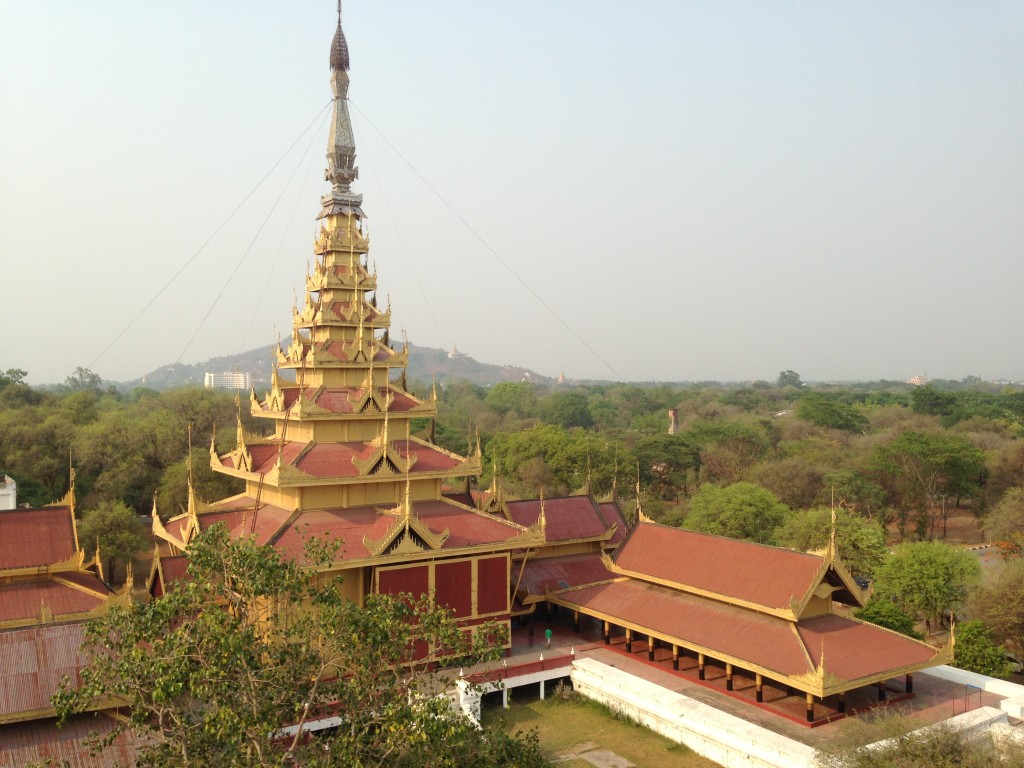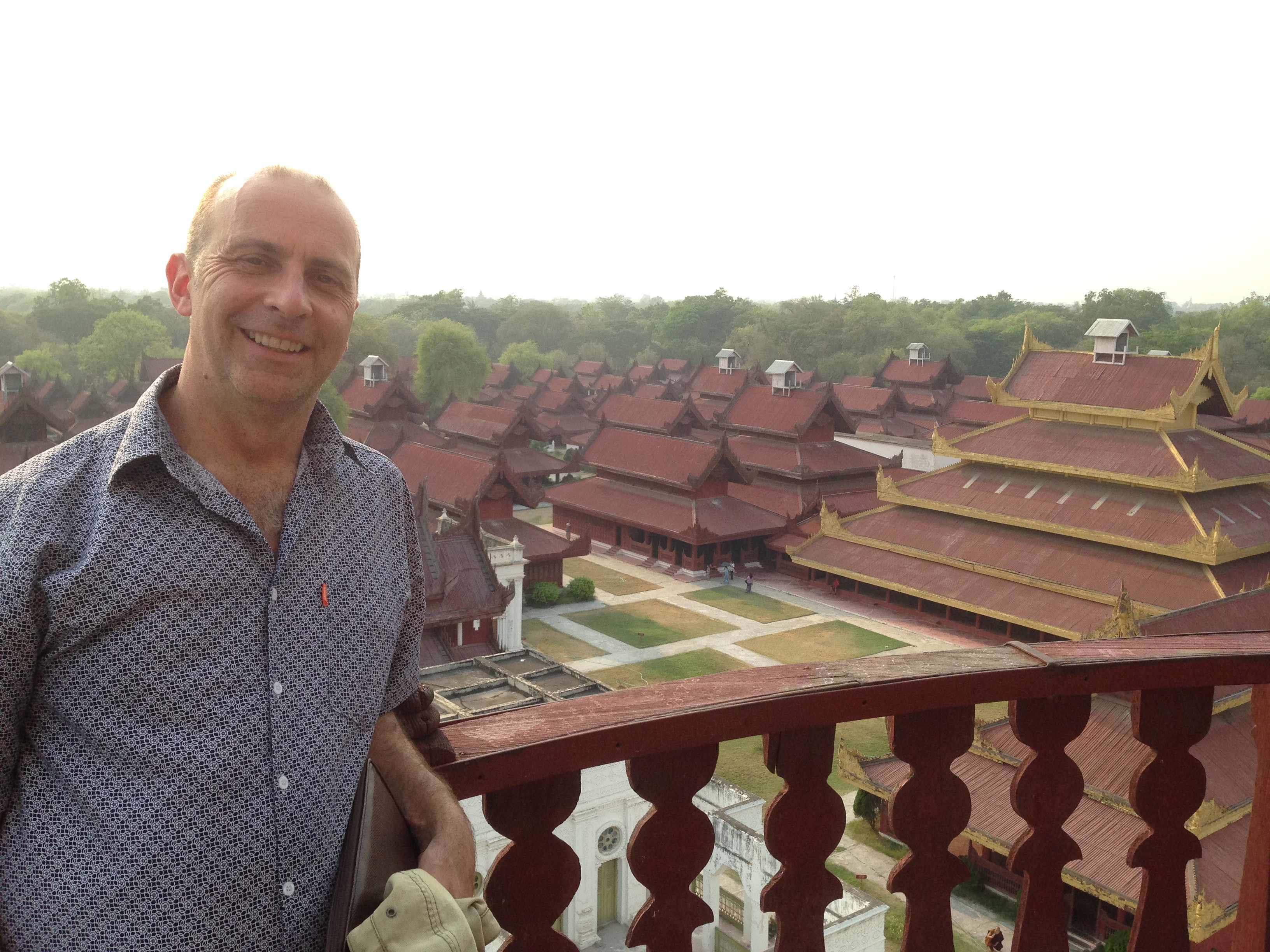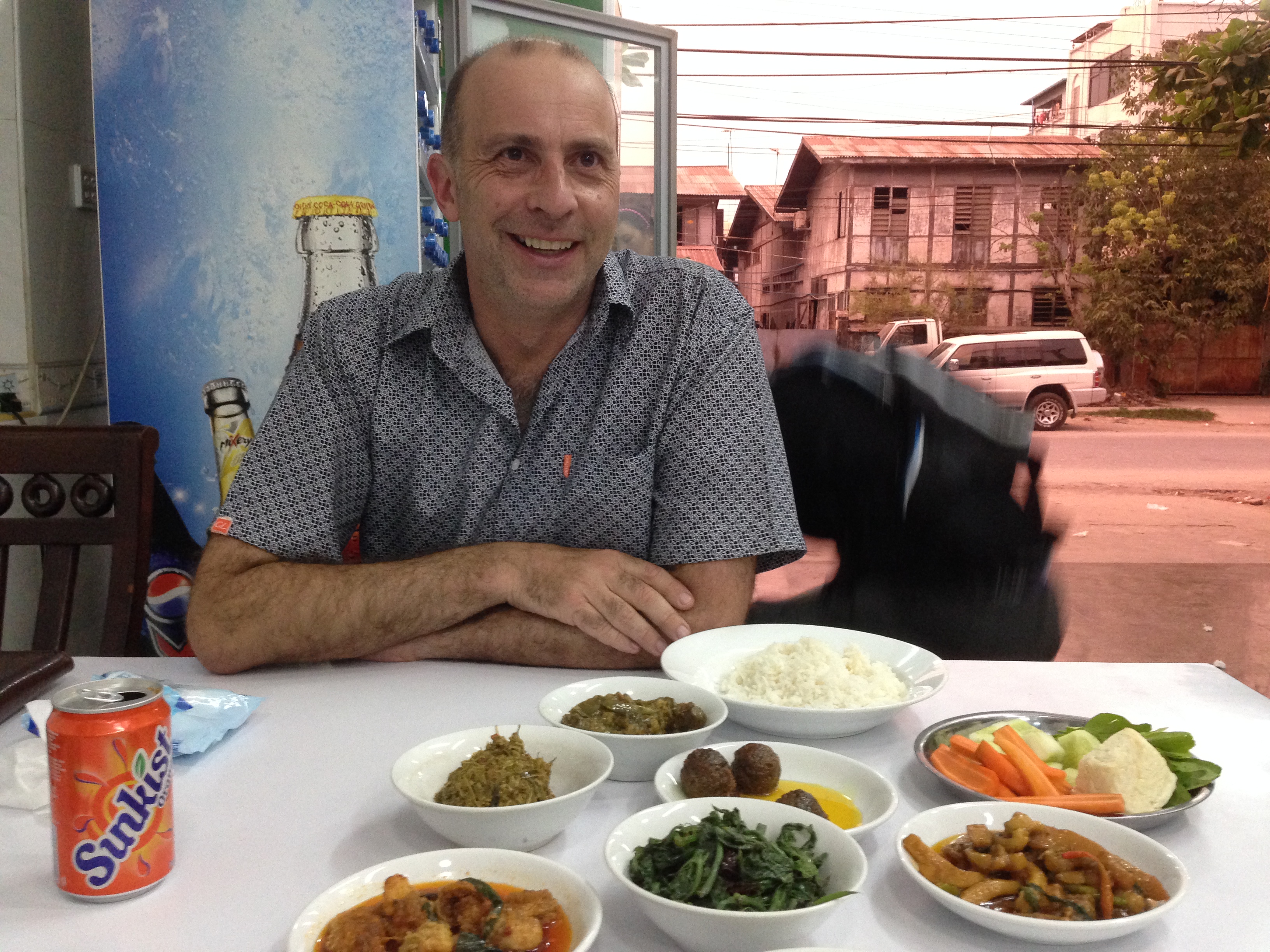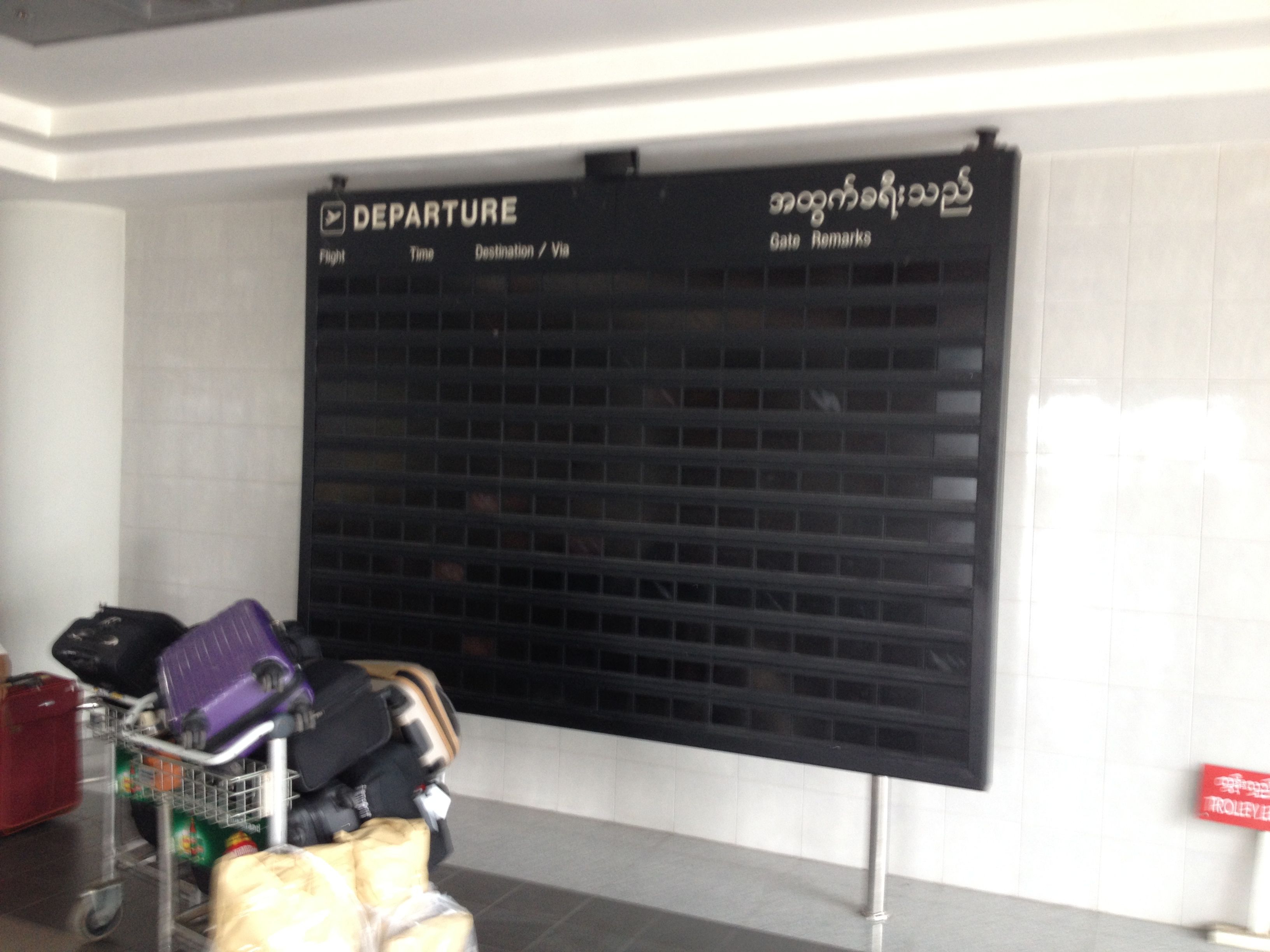‘Come you back, you British soldier; come you back to Mandalay!'”
Despite writing this very famous poem, Rudyard Kipling never stepped foot in Mandalay. This city 716 km (445 miles) north of Yangon (previously known as Rangoon) was the capital of Myanmar (Burma) from 1857 to 1885. At that time, the British annexed the country , exiled the royal family, made the country part of India and moved the capital to Rangoon.
As per usual, with every city I visit I rate the city in comparison with the others I have visited. Yangon is compared to 179 other cities with a population of 100,000+
Aesthetics (6/10)
Mandalay is situated on the east bank of the Irrawaddy River. The original plan for Mandalay was a city 66 sq km (25.5 sq miles) in area, surrounded by four rivers, laid out on a grid pattern. Most of downtown, south of the Royal Palace follows the grid but it breaks down in the outer parts of the city.
The city has been decimated by a series of huge fires over the last 30 years. In May 1981, a fire destroyed at least 6,000 buildings, leaving about 36,000 homeless. March 1984 saw a fire wipe out 2,700 buildings making 23,000 people homeless. Mandalay’s second largest market succumbed to fire in February 2008 and 320 homes were lost in February 2009 leaving over 1600 people homeless.
We found the city to be very dusty with a disconnected collection of buildings in the downtown. There are many trees lining the streets which provide some shelter from the extreme heat. Pavements varied from non existent to dangerously precarious hole ridden stretches. Street lighting varies from excellent to non existent. Traffic lights function intermittently and pedestrians do not have right of way. Garbage collection, water and electrical supply and sewerage services are all way below par.
Culture (5/10)
Mandalay is the cultural and religious centre for Buddhism in Myanmar. There are over 700 pagodas and many Buddhist monasteries. As half of all the monks in Myanmar live in Mandalay, the sight of monks around the city was very common.
The whole Mandalay hill area is a maze of pagodas including one with “the world’s largest book” – 729 marble slabs of Buddhist scriptures. Sadly, then British took much of the gold from the pagodas and several thousand bronze bells.
Climbing the hill to the temple at the top is a must. It can be done on foot or by motorbike or taxi. The view from the 230 metre hill is stunning and we enjoyed sunset there. We were interested to see that the British troops that fought their way up the hill to rescue it from the Japanese in World War Two donated money to its upkeep. NB You pay a fee to use your camera up there.
The teak Royal Palace site is a dramatic one at the north of the downtown. The moat looks amazing. Sadly, the British looted the palace in 1889 and took most of its valuables away. London’s Victoria and Albert Museum has many of them in its collection. The National Museum in Yangon also possesses some.
The palace was used by British as a fort, then taken over by the Japanese in World War Two before being burnt to the ground by the British toward the end of the war. The palace was rebuilt in the 1990s.
The area is still used today as a compound by the Myanmar Military and we passed through off limit barracks and training soldiers to get to the Royal Palace. We didn’t take any pictures of any of the modern military operations including the sign on the heavily guarded main gate which clearly states “Tatmadaw [The Army] and the people, cooperate and crush all those harming the union.”
There are half a dozen movie theatres showing contemporary Western, Hindi and Chinese movies. Clothing, mobile phone and car repair shops dotted the city.
There is a good collection of food stores, night markets and restaurants around the city. Meals cost around $1 to $4.
Tourists complain, however, that there is “not much to do” and hightail it out of there for Bagan and Yangon, which is what we did! (Reviews of those two cities to come). On reflection, I would have liked another 24 hours in Mandalay.
Crime (9/10)
Crime rates in Mandalay are at the low end. Crime in some other tourist centres in Myanmar is growing but Mandalay felt safe even on the dark streets.
Liveability (5/10)
The city has an estimated population of 1. 4 to 1.5 million people making it the second biggest in the country after Yangon. A third of the population are Chinese. Average temperature is 33 degrees celsius (91.4) with 66% humidity. April is the hottest month with an average 100 degree fahrenheit temperature (38 celsius). Between 11 and 3pm, the streets were very quiet as locals rested, dozed and even slept in any cool spot they could find. At dusk, the city’s residential areas blossomed with locals chatting, eating and shopping. Many stared fascinated at the westerner wandering around.
Online real estate listing site Lamudi, identified Mandalay as being one of the most “different but exciting [cities in Asia] to live in”. I am yet to be convinced! An consortium of ten international and 15 local consultants are currently working on a project financed by the Asian Development Bank (ADB) to develop Mandalay into “a sustainable clean, green and liveable city”. I hope they succeed. I would like to see Mandalay blossom into the might city it was established to be.
Transport (5/10)
We flew Air Asia from Bangkok into Mandalay International airport (MDL) which is actually 35 kilometres (20 miles) from downtown). The airport, built in 1999 has five gates and s the longest runway in Southeast Asia. Bangkok Airways, China Eastern, Thai Smile (seasonal) and Myanmar Airways International provide the international services, most of which are from Thailand. Silk Air flights from Singapore will start in June, 2014. I was shocked to find that none of the airbridges are used and passengers all disembark via the tarmac. The aircon in the terminal was patchy, the windows dirty and cracked.I was also bemused by the completely unused departures board, a sight i have never seen in an airport before.
The welcome we got from the Immigration agents was one of the friendliest I have ever got at any airport in the world and I was pelasantly surpeised at how quickly the agents processed us.
Taxis and shared buses are the main options for the hour long journey from the airport but some airlines including Air Asia offer a complimentary air conditioned shuttle, which we took advantage of.
Walking is the easiest way to get around much of the city grid with taxis between areas. We had to negotiate hard with taxi prices starting at three to five times what locals would pay (I was happy to pay double local prices).
Buses roared past us to various destinations but we never made the time to ride on one. Signs were not written in English, stops unclear and the numbers were in the Myanmar script which I only mastered 1 to 6 after a week! Bus fares are around 30 to 40 cents payable to the conductor.
We took the night train out of Mandalay to Bagan (see my trip report next Tuesday 6th May).
Vibe (5/10)
The people of Mandalay are its greatest asset. We found them to be generally friendly, respectful and curious. The presence of the military dominates city life here, in a way we didn’t experience in other cities. One taxi driver was very strident in his denouncements of the corrupt government, Unsure, whether he was being genuine or testing us out, we didn’t respond as he sermonised about the corruption of the government and army.
The Verdict: 51%
A city with much potential. I hope it capitalises on its beautiful people, lovely setting, old trees and grid layout to be an “different but exciting” city.
Related Posts
Visiting Kuala Lumpur (69%)
Visiting Penang, Malaysia (72%)
Dull Dunedin? (83%)
Happening Ho Chi Minh City (85%)









[…] Mandalay to Bagan is a mere 179km (110 miles). The train takes just under eight hours to complete the trip- yes an average 14mph! Interestingly, the distance is similar to that between Nagoya and Osaka in Japan which takes a mere 50 minutes by Shinkansen high speed train! What is extraordinary is that Mandalay to Bagan is the newest and most modern rail line in Myanmar, having been built in 1996. […]